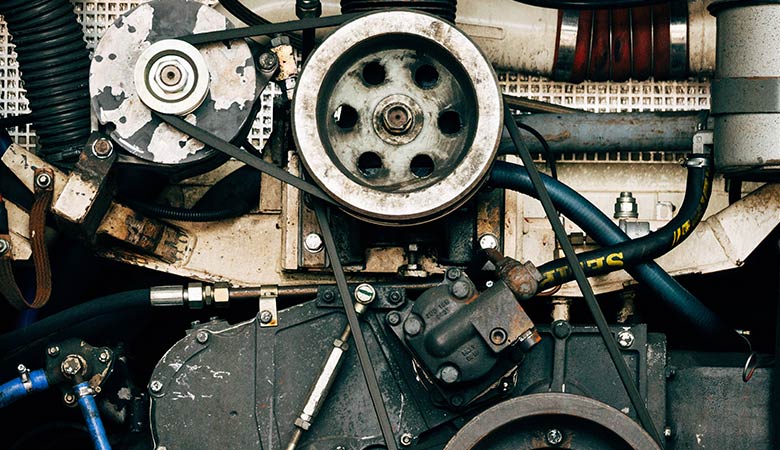Gestão / Artigos
5 environmental and safety regulations that every company should know about
Environmental and safety regulations protect companies and the environment. Discover 5 that every organization should know about.

 5 minutos de leitura
5 minutos de leitura
2024-03-08 12:41:13
Environmental and safety standards exist for a reason: to serve as a guide for companies seeking to reduce their environmental impact and operate sustainably and safely. This is a mission for everyone, but it’s not always easy to know which are the most important standards to follow and how to choose compliant equipment. These are 5 standards that all companies should know – and demand in their equipment.
1. European Standard EN ISO 9001:2015 defines what an effective quality management system actually is
The European Standard EN ISO 9001:2015 brings together a series of international requirements for quality management systems. It applies to companies of any size or sector and defines the criteria for an effective quality management system.
The standard is based on principles such as customer focus, leadership, peoples’ involvement, process approach, continual improvement, data-based decision-making and relationship management with interested parties. Since it is so comprehensive, it is divided into several directives, of which two stand out.
1.1 Directive 2006/42/EC establishes safety regulations for industrial machinery
Directive 2006/42/EC establishes essential safety requirements for industrial machinery. Its main objective is to guarantee a high level of health and safety protection for operators and others. This directive lists a series of essential requirements.
- Safety requirements to ensure the protection of operators and others.
- Risk assessment to identify and minimize the dangers associated with the use of the machine.
- Availability of technical documentation, operating and maintenance instructions in one or more official languages of the Member States.
- CE marking, to indicate that the machinery complies with European safety standards.
- Declaration of conformity, to prove that the machine meets the directive’s requirements.
1.2 Directive 2014/35/EU defines safety requirements for electrical equipment
Directive 2014/35/EU defines the essential safety requirements for electrical equipment intended for use at certain voltage limits. The essential requirements encompass some of those mentioned above, such as the essential safety requirements, CE marking, or conformity assessment. In some cases, manufacturers may be required to notify an independent body to assess and verify the conformity of their products.
1.3 Directive 2014/30/EU ensures electromagnetic compatibility
Directive 2014/30/EU defines the criteria for the electromagnetic compatibility of electrical and electronic equipment, including information technology equipment, household appliances, telecommunications equipment and industrial machinery, among others. Since February 2014, its role has been to ensure that machines do not cause harmful electromagnetic interference and are immune to interference.
The main elements of this directive include:
- Essential electromagnetic compatibility requirements.
- CE marking.
- Conformity assessment.
- Technical documentation.
- Independent body notification.
2. European standard EN 60204-1:2018 establishes electrical safety guidelines
EN 60204-1:2018 establishes standards for the electrical safety of industrial machinery. It specifically addresses the general requirements applicable to all electrical equipment used in machinery.
The main aspects covered by Part 1 of this standard include:
- General requirements for the electrical installation, including the selection and installation of components.
- Protection against hazards such as electric shock, overvoltage, overcurrent and other electrical risks associated with the use of machinery.
- Requirements for insulating materials and electrical components used in machinery.
- Technical documentation and identification of electrical equipment.
- Electrical connection methods, including specifications for conductors, terminals and connecting devices.
- Protection criteria for overheating and overloading.
3. European Standard EN ISO 12100:2018, the standard for identifying the risks
The European Standard EN ISO 12100:2018 provides general safety principles and guidelines for the design of machinery, helping manufacturers carry out risk assessments and implement risk reduction measures. The focus is on identifying and managing hazards associated during the life cycle of machines, from the design phase to disposal. The aim is to prevent accidents and promote safe working environments.
The main criteria include:
- Identification of hazards associated with machinery at all stages of its life cycle, from design to decommissioning.
- Risk assessment to help manufacturers quantify the potential hazards associated with the use of machinery.
- Guidelines for implementing risk reduction measures.
- Hierarchy of protective measures, indicating which ones should be prioritized over complementary ones.
MultiWasher, the industrial washing machine that goes beyond the standards
Complying with environmental and safety regulations is the responsibility of all industrial machinery manufacturers, including Somengil. The MultiWasher, our state-of-the-art industrial washing machine, was approved under these and many other strict standards set by the EU. It stands out for its proactive approach to safety and compliance with environmental and safety standards. Contact us and make sure you invest in equipment that meets environmental and safety regulations.
Também pode gostar

Gestão / ArtigosArtigos
DMAIC: what it is, what it is for, and how to use it
Reduce waste, solve problems, and improve processes. Learn about the DMAIC method and find out how to implement it in practice.
Postado em 2023-03-30

Gestão / ArtigosArtigos
Sweet disposition: the importance of an efficient layout
The design of a business layout seeks to optimize the disposition of people and materials, ensure the efficiency of operations and avoid accident...
Postado em 2021-11-04

Gestão / ArtigosArtigos
One Step Ahead: What is Predictive Maintenance?
Predictive maintenance uses data to predict and prevent failures, increase equipment lifetime and improve efficiency. But what does it mean for b...
Postado em 2022-01-06






















 Português
Português English (UK)
English (UK) English (USA)
English (USA) Français
Français Español
Español Deutsch
Deutsch